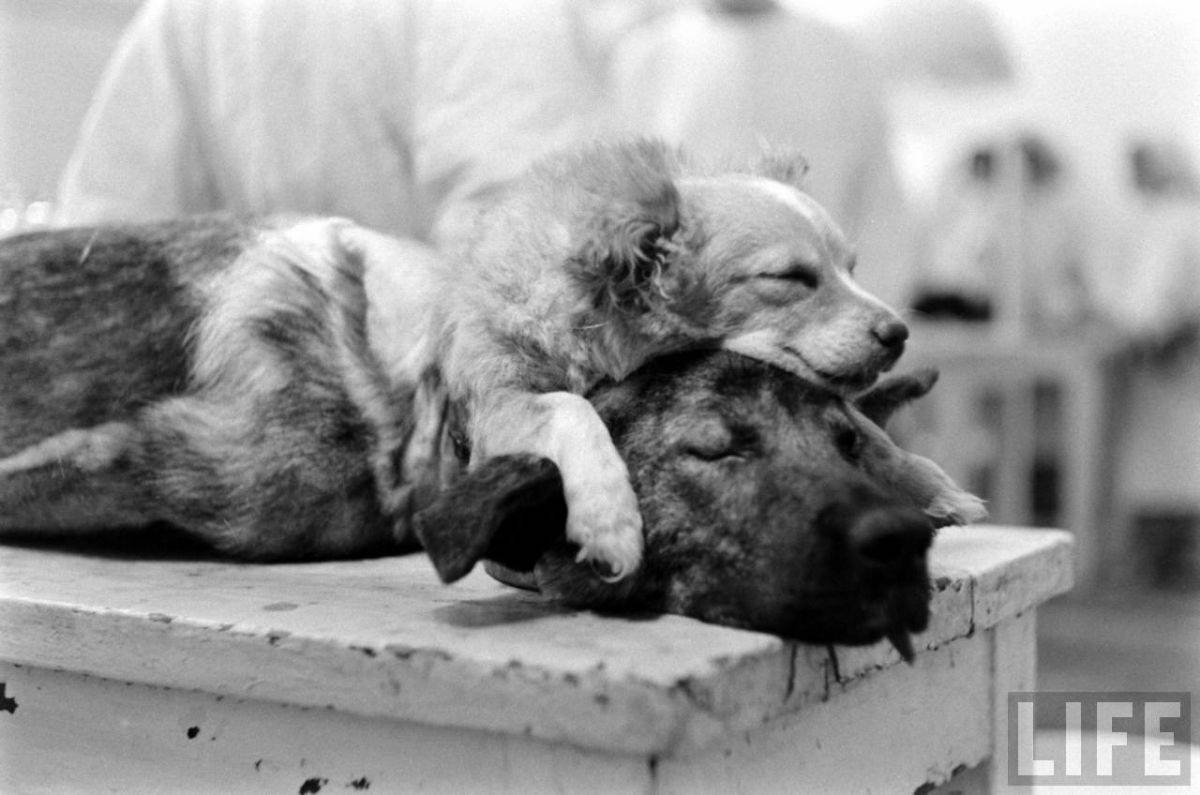Vladimir Demikhov, a Soviet scientist and organ transplant pioneer, attached a small dog’s upper body to a large dog’s neck in 1959. While he had performed this procedure before (the first time was in 1954), this was the first time the entire procedure had been documented by LIFE magazine. Small dog Shavka was nine years old and large dog Brodyaga, a stray who was picked up in the streets by a dog catcher, was twelve years old.
The dogs were anesthetized prior to the surgery, and the areas to be bisected were shaved, the neck of Brodyaga and the midsection of Shavka. Demikhov and his team cut into Brodyaga’s neck, exposing his jugular vein, aorta, and cervical vertebrae. Then they cut into Shavka’s midsection, layer by layer, attaching small blood vessels to Brodyaga’s. Shavka’s spine was severed behind her shoulders, her lower body removed, and the main blood vessels and trachea were connected to his lungs. Shavka’s heart and lungs were removed as the final step. Her esophagus wasn’t attached to Brodyaga’s stomach, it was outside their bodies.
Both dogs recovered from the surgery and were able to move independently. Brodyaga could lap a few mouthfuls of water from a bowl, but the water ran down Shavka’s esophagus and down Shavka’s neck. Shavka received nutrients and oxygen from Brodyaga’s heart, which was pumping blood into her system. Shavka would bite the large dog’s ear as Brodyaga walked them around the yard. Brodyaga and Shavka died four days after the surgery. Their neck veins were strangled, resulting in their deaths.
The Russian surgeon performed 20 such experiments on dogs. One pair of dogs lived for 29 days, but most lived closer to a week. The majority of the dogs died from tissue rejection (when the recipient’s immune system recognizes transplanted tissue as foreign and destroys it). Today, immunosuppressive drugs are used to reduce the risk of tissue rejection. The experiments Demikhov conducted (mostly on dogs) included heart, lung, and heart-lung transplants. His work paved the way for human organ transplants, and some believe that human head transplantation will occur soon – for example, transplanting the head of a quadriplegic onto a functional donor body. Animal testing continues even today despite alternative methods. Animal rights groups are working hard to stop animal testing so that one day, as soon as possible, there won’t be any more animals suffering for humanity’s benefit.





















